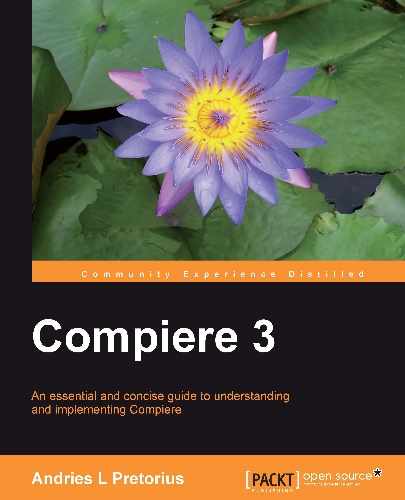Managing an integrated business that requires an ERP system is a challenge in itself, so the defining question when one starts to look at an ERP system is: will an ERP add value to the business and be worth the investment? ERP systems costs money, they require new skills, they require employees and business to adapt, and, ultimately, they take a lot of management time to implement.
Most notably, an ERP system has the purpose of providing management with an integrated information and transaction processing environment. This will provide the required financial and non-financial data and information for insightful reports that inform and underwrite decision making. Information systems must measure the effective and optimum use of enterprise resources, whether they are defined as people, products, services, or assets.
This chapter deals with assisting you in evaluating the Compiere system. In this chapter we shall:
- Give you a list of the core functionalities of the Compiere system
- Indicate which critical decision factors you must use in evaluating the system
- Present an understanding of the different Compiere product editions
- Show you where to get more information on Compiere
The Compiere system is certainly suitable in the following organizational circumstances:
|
Circumstance |
Compiere advantage |
|---|---|
|
Outgrowing existing system The business is outgrowing its existing systems. Generally, the business was doing fine on a small accounting package, but now requires additional functionality. It may also require a more scalable enterprise database, or the number of users and the complexity of the business is expanding. |
Compiere's technology stack offers a growing company the enterprise scalability platform required. Functionality and transactions volumes can be scaled based on specific user needs. |
|
Existing system is old technology The existing system is so old that support cannot be easily obtained and the technology is just hanging by a thread. This is usually the case with long-standing or older generation management. For example, a family business that has been in existence for many years and the legacy system has just always worked, but finally a decision has to be made as to a new system. |
Compiere offers the current Java and web technology platform , which is based on open architecture and standards, throughout its offering. |
|
Dynamic system requirement More progressive and dynamic management where the underlying technology is as important to the business as the business itself. |
Due to its open source nature, Compiere offers a flexible and transparent technology platform. |
|
Value proposition Large businesses that are evaluating ERP vendor systems and are analyzing the costs versus return. |
Compiere provides a competitive licensing model up to large-scale Enterprise levels. |
